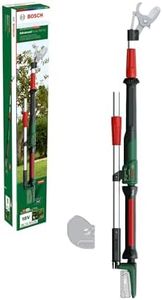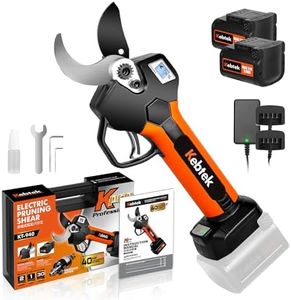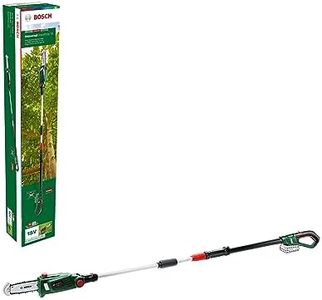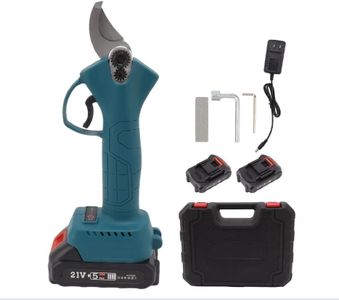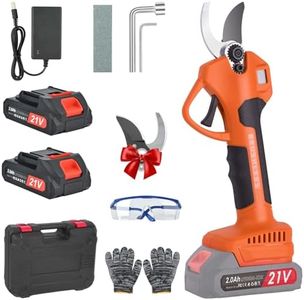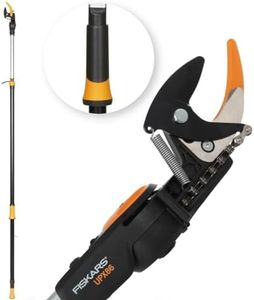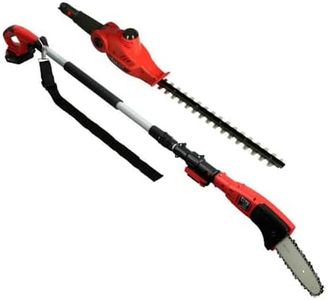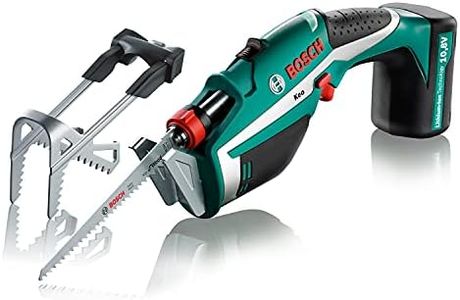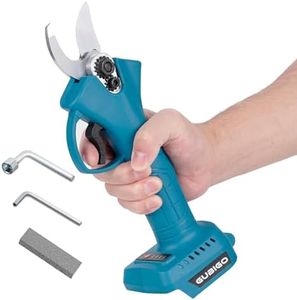We Use CookiesWe use cookies to enhance the security, performance,
functionality and for analytical and promotional activities. By continuing to browse this site you
are agreeing to our privacy policy
10 Best Power Pruners
From leading brands and best sellers available on the web.Buying Guide for the Best Power Pruners
Choosing the right power pruner is all about matching the tool to your pruning needs. Power pruners can make yard work much easier, especially if you have a lot of trees or thick branches to keep in shape. To narrow down your choice, it's a good idea to think about the size and type of plants you'll be working with, how much work you'll be doing at once, and how comfortable you want the tool to be during longer sessions.Power SourceThe power source of a pruner refers to how it gets its energy—most commonly battery (cordless), corded electric, or gas. Battery-powered pruners are quiet, portable and very convenient for quick or moderate jobs, as there's no cord to limit your range, but they need recharging after an hour or two. Corded electric pruners ensure consistent power for as long as they're plugged in, but your movement is limited by the length of the cord. Gas-powered versions are the most powerful and suitable for heavy-duty jobs or larger properties, but they're heavier, noisier, and need more maintenance. You should choose the power source based on the type of pruning you do most often and whether you'll value portability or raw power more.
Cutting CapacityCutting capacity measures the maximum diameter of branch that the pruner can cut cleanly. Smaller cutting capacities (about half an inch) are suited for light trimming of flower stems and thin branches, while medium capacities (about 1 inch) handle most shrub or fruit tree limbs. Pruners with a larger cutting capacity (over 1 inch) are for thick, mature branches. To choose the right one, think about the typical size of the branches you'll be cutting—trying to cut thicker wood than your tool is built for can damage both the pruner and the plant.
WeightWeight is how heavy the pruner feels in your hands, and it's important because a few extra pounds can make a big difference if you're pruning for a while, especially overhead. Lightweight models are easier to maneuver and better for those with less hand strength or mobility, but they might not have as much power. Heavier models can tackle tougher branches, but may cause fatigue more quickly. Consider how much pruning you'll be doing and whether comfort or power is more important for you.
Blade TypePower pruners come with different types of blades, usually bypass or anvil. Bypass blades work like scissors and make clean cuts ideal for live branches and precise work. Anvil blades trap the branch against a flat surface and are better for dead, dry wood. Picking the right blade type depends on whether you'll be mainly cutting living plants (bypass) or removing old, tough wood (anvil).
Safety FeaturesSafety features can include things like blade covers, safety locks, and two-step triggers. These are designed to help prevent accidental starts and protect you when handling the tool. If you’re newer to power tools or working in environments where children or pets might be nearby, consider models with more comprehensive safety features.
Handle Design and ErgonomicsHandle design and ergonomics refer to the comfort and grip of the pruner. Some handles have rubberized grips or are shaped to reduce wrist strain, which is particularly helpful for longer sessions or those with hand weakness. If you expect to use the tool frequently or for extended periods, look for ergonomic features that will make the work more comfortable and help prevent fatigue.
